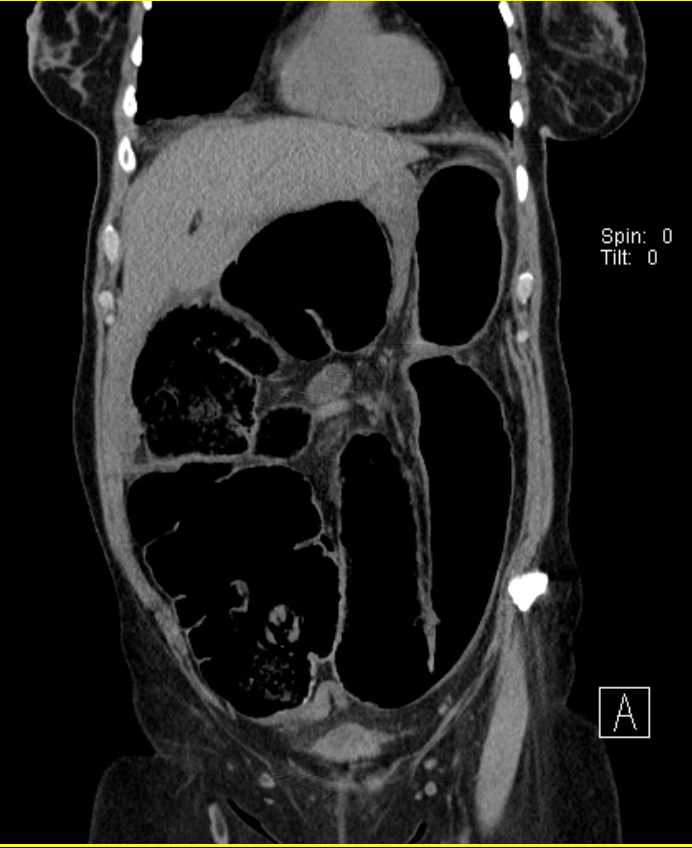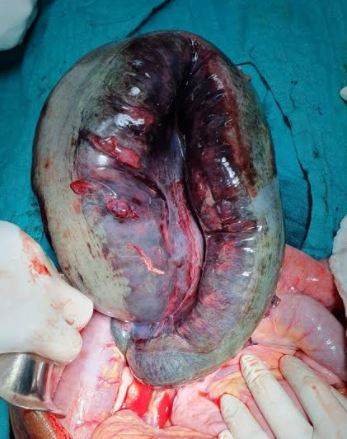[1]
van Steensel S, van den Hil LCL, Schreinemacher MHF, Ten Broek RPG, van Goor H, Bouvy ND. Adhesion awareness in 2016: An update of the national survey of surgeons. PloS one. 2018:13(8):e0202418. doi: 10.1371/journal.pone.0202418. Epub 2018 Aug 17
[PubMed PMID: 30118503]
Level 3 (low-level) evidence
[2]
Behman R, Nathens AB, Karanicolas PJ. Laparoscopic Surgery for Small Bowel Obstruction: Is It Safe? Advances in surgery. 2018 Sep:52(1):15-27. doi: 10.1016/j.yasu.2018.03.001. Epub 2018 Jun 19
[PubMed PMID: 30098610]
Level 3 (low-level) evidence
[3]
Behman R, Nathens AB, Look Hong N, Pechlivanoglou P, Karanicolas PJ. Evolving Management Strategies in Patients with Adhesive Small Bowel Obstruction: a Population-Based Analysis. Journal of gastrointestinal surgery : official journal of the Society for Surgery of the Alimentary Tract. 2018 Dec:22(12):2133-2141. doi: 10.1007/s11605-018-3881-z. Epub 2018 Jul 26
[PubMed PMID: 30051307]
[4]
Ten Broek RPG, Krielen P, Di Saverio S, Coccolini F, Biffl WL, Ansaloni L, Velmahos GC, Sartelli M, Fraga GP, Kelly MD, Moore FA, Peitzman AB, Leppaniemi A, Moore EE, Jeekel J, Kluger Y, Sugrue M, Balogh ZJ, Bendinelli C, Civil I, Coimbra R, De Moya M, Ferrada P, Inaba K, Ivatury R, Latifi R, Kashuk JL, Kirkpatrick AW, Maier R, Rizoli S, Sakakushev B, Scalea T, Søreide K, Weber D, Wani I, Abu-Zidan FM, De'Angelis N, Piscioneri F, Galante JM, Catena F, van Goor H. Bologna guidelines for diagnosis and management of adhesive small bowel obstruction (ASBO): 2017 update of the evidence-based guidelines from the world society of emergency surgery ASBO working group. World journal of emergency surgery : WJES. 2018:13():24. doi: 10.1186/s13017-018-0185-2. Epub 2018 Jun 19
[PubMed PMID: 29946347]
Level 1 (high-level) evidence
[5]
Pavlidis E, Kosmidis C, Sapalidis K, Tsakalidis A, Giannakidis D, Rafailidis V, Koimtzis G, Kesisoglou I. Small bowel obstruction as a result of an obturator hernia: a rare cause and a challenging diagnosis. Journal of surgical case reports. 2018 Jul:2018(7):rjy161. doi: 10.1093/jscr/rjy161. Epub 2018 Jul 3
[PubMed PMID: 29992011]
Level 3 (low-level) evidence
[6]
Andersen P, Jensen KK, Erichsen R, Frøslev T, Krarup PM, Madsen MR, Laurberg S, Iversen LH. Nationwide population-based cohort study to assess risk of surgery for adhesive small bowel obstruction following open or laparoscopic rectal cancer resection. BJS open. 2017 Apr:1(2):30-38. doi: 10.1002/bjs5.5. Epub 2017 Jul 26
[PubMed PMID: 29951603]
[7]
Doshi R, Desai J, Shah Y, Decter D, Doshi S. Incidence, features, in-hospital outcomes and predictors of in-hospital mortality associated with toxic megacolon hospitalizations in the United States. Internal and emergency medicine. 2018 Sep:13(6):881-887. doi: 10.1007/s11739-018-1889-8. Epub 2018 Jun 12
[PubMed PMID: 29948833]
[8]
Li PH, Tee YS, Fu CY, Liao CH, Wang SY, Hsu YP, Yeh CN, Wu EH. The Role of Noncontrast CT in the Evaluation of Surgical Abdomen Patients. The American surgeon. 2018 Jun 1:84(6):1015-1021
[PubMed PMID: 29981641]
[9]
Pisano M, Zorcolo L, Merli C, Cimbanassi S, Poiasina E, Ceresoli M, Agresta F, Allievi N, Bellanova G, Coccolini F, Coy C, Fugazzola P, Martinez CA, Montori G, Paolillo C, Penachim TJ, Pereira B, Reis T, Restivo A, Rezende-Neto J, Sartelli M, Valentino M, Abu-Zidan FM, Ashkenazi I, Bala M, Chiara O, De' Angelis N, Deidda S, De Simone B, Di Saverio S, Finotti E, Kenji I, Moore E, Wexner S, Biffl W, Coimbra R, Guttadauro A, Leppäniemi A, Maier R, Magnone S, Mefire AC, Peitzmann A, Sakakushev B, Sugrue M, Viale P, Weber D, Kashuk J, Fraga GP, Kluger I, Catena F, Ansaloni L. 2017 WSES guidelines on colon and rectal cancer emergencies: obstruction and perforation. World journal of emergency surgery : WJES. 2018:13():36. doi: 10.1186/s13017-018-0192-3. Epub 2018 Aug 13
[PubMed PMID: 30123315]
[10]
Mellor K, Hind D, Lee MJ. A systematic review of outcomes reported in small bowel obstruction research. The Journal of surgical research. 2018 Sep:229():41-50. doi: 10.1016/j.jss.2018.03.044. Epub 2018 Apr 16
[PubMed PMID: 29937015]
Level 1 (high-level) evidence



